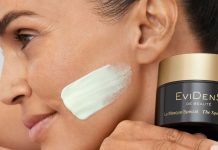If you or a loved one is considering getting a nose job, be sure to learn all you can about the procedure in advance. Because rhinoplasty is one of the most surgically demanding procedures, you’ll want to fully understand your options and choose a very experienced surgeon.
 We consulted the experts from the Parker Center for Plastic Surgery for the 4-1-1 on rhinoplasty and have an accompanying infographic to help you educate yourself on nose reshaping.
We consulted the experts from the Parker Center for Plastic Surgery for the 4-1-1 on rhinoplasty and have an accompanying infographic to help you educate yourself on nose reshaping.
Why it’s called Rhinoplasty — and more history
- The “rhino” in rhinoplasty has nothing to do with a rhinoceros. The word rhinoplasty actually comes from two Greek words: “rhino” meaning “nose” and “plasticos”, meaning “to shape”.
- Nasal repair is the oldest form of reconstructive surgery, dating back to ancient Egypt and India.
- Italian surgeon Gaspare Tagliacozzi debuted the first truly successful rhinoplasty technique more than 400 years ago. His technique was later forgotten, but a German surgeon rediscovered and then improved upon Tagliacozzi’s method in 1800.
How many people get them? Who are they?
- 213,780 rhinoplasties were performed in the US in 2018 according to the American Society of Plastic Surgeons.
- Rhinoplasty ranks 10th in popularity among plastic surgery procedures.
Of rhinoplasty patients in 2018, 84% were women and 16% were men. - People between the ages of 19-34 accounted for ~50% of all nasal surgeries.
- Rhinoplasty can be performed on teens as young as 13-16, as long as the nose is fully developed.
Why people are getting rhinoplasties:
- To look their best — aesthetic rhinoplasty patients are typically looking to increase their physical attractiveness and thereby improve self-esteem. Plastic surgeons can accomplish this by:
- Modifying nose size — adjust a nose that appears too large or too small
- Improving nose shape — remove a hump or align a crooked nose
- Creating greater facial harmony — make adjustments to help the nose “fit” with the rest of the face
- To feel their best — functional rhinoplasty patients are interested in improved breathing, inhalation, and comfort. Experienced plastic surgeons can alleviate symptoms that result from nasal passage obstructions and other anatomical hindrances including:
- Correct a deviated septum — when the bone and cartilage that divide the nasal cavity is significantly off-center
- Treat inferior turbinate hypertrophy — internal structures along the sides of the nasal cavities are enlarged in one or both sides of the nose
- Repair collapsed nasal valves — weakness or narrowing of the lower edge of upper lateral cartilages
- To look AND feel their best — as shape and function of the nose are intimately related, you can choose to address both aesthetic and functional benefits.
Nose anatomy and types of rhinoplasty
- Nose anatomy is relatively simple: the upper 40% of consists of paired nasal bones which are not movable, while the lower 60% of the nose is made of movable cartilage. The nasal septum contains both cartilage and bone and separates two nasal passages.
- There are two primary rhinoplasty techniques:
- Closed rhinoplasty, or endonasal rhinoplasty, places incisions inside the nostrils. This technique is reserved for relatively small adjustments in nasal shape and certain types of deviated septum repair. There is no visible scarring after surgery.
- Open rhinoplasty involves a small external incision between the nostrils and just behind the nasal tip. This allows the surgeon direct vision when sculpting the underlying bone and cartilage. For more extensive reshaping, a small incision under the nasal tip allows more complete access. Scars are still well-hidden.
- Nasal “tip plasty” reshapes the tip of the patient’s nose—it is an area of focus vs. a surgical technique. Typically, the surgeon will use the open rhinoplasty approach to achieve the most natural, symmetrical tip.
What happens during and after rhinoplasty
- The average length of nose surgery is 1-2 hours and patients typically return to work 7-10 days later.
- According to the American Society for Aesthetic Plastic Surgery, the average cost of rhinoplasty surgery is $5087, not including facility fees and anesthesia.
- Complementary aesthetic procedures such as chin augmentation, eye rejuvenation, and neck contouring are often performed in unison with rhinoplasty to achieve complete facial balance and a more streamlined intake and recovery process.
- Rhinoplasty should be performed by a board certified plastic surgeon in your area. Remember to select a surgeon you can trust by focusing on:
-
- Their education, training, and certification
- Their experience with rhinoplasty surgery
- Your comfort level with him or her












